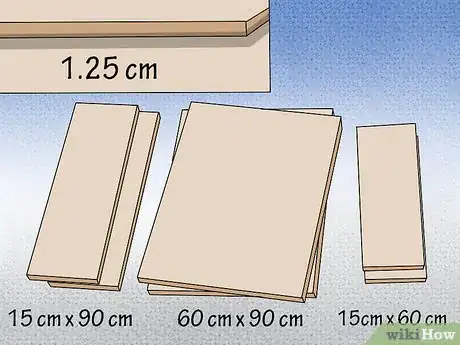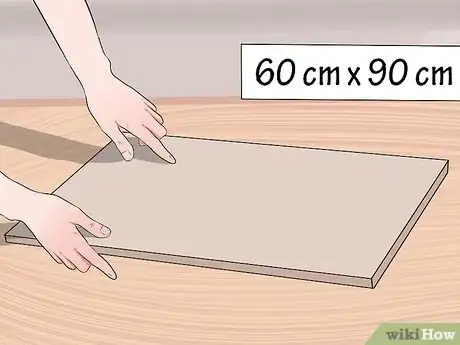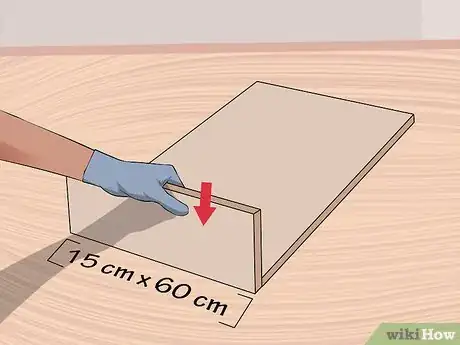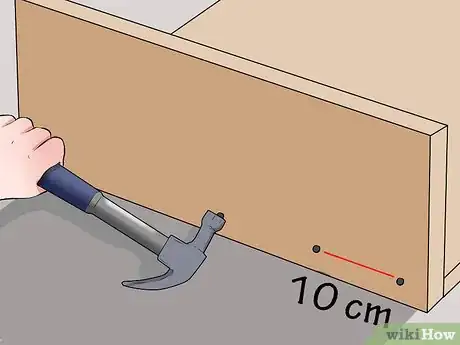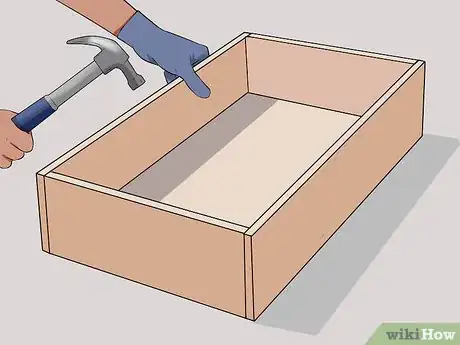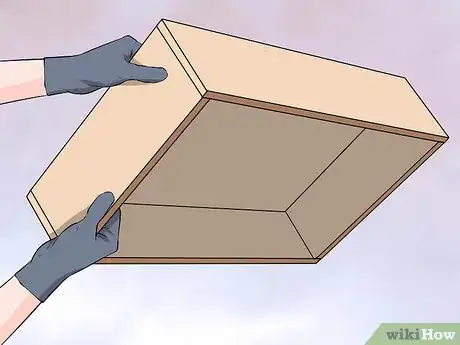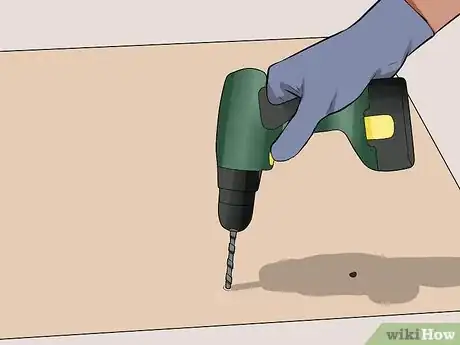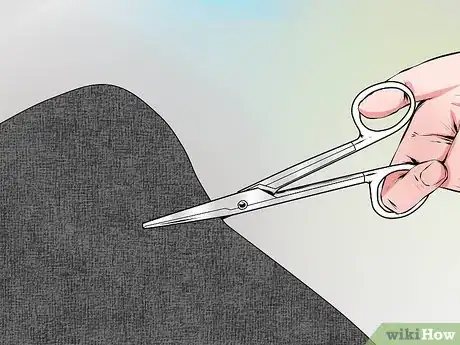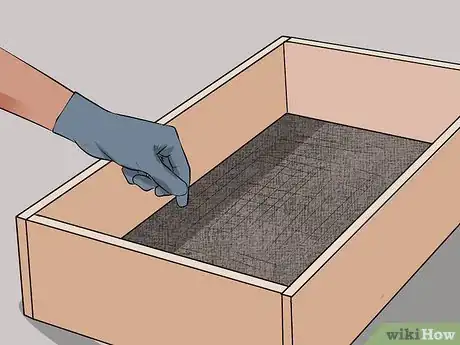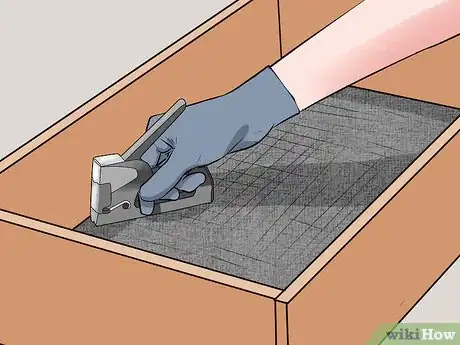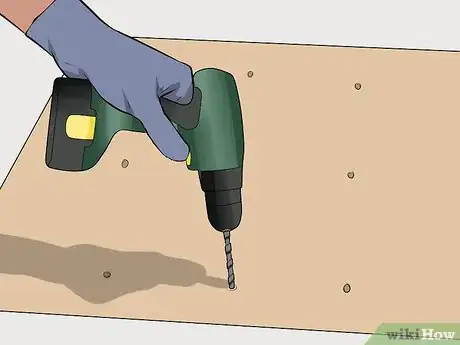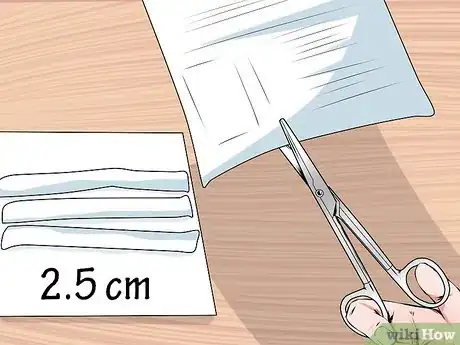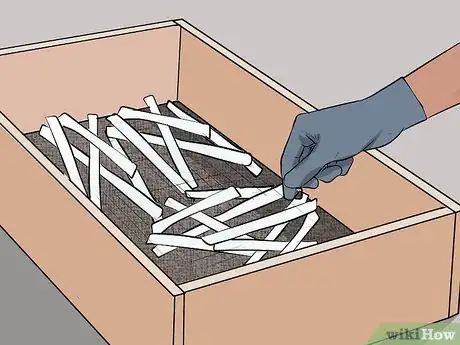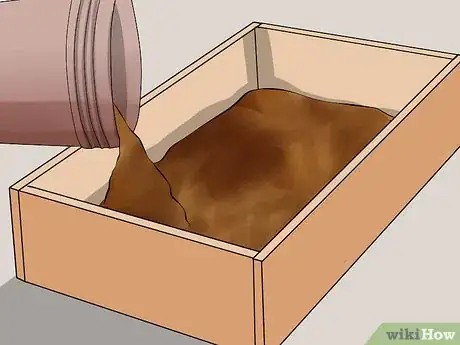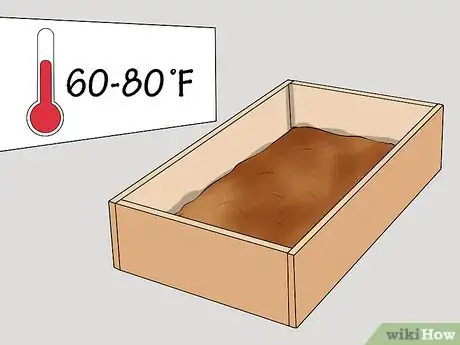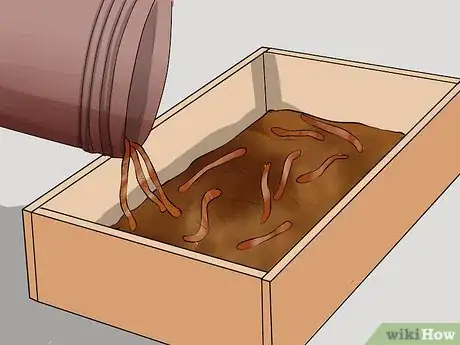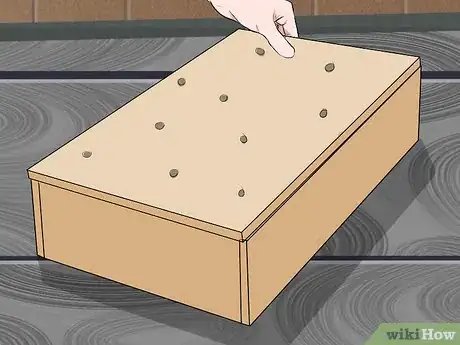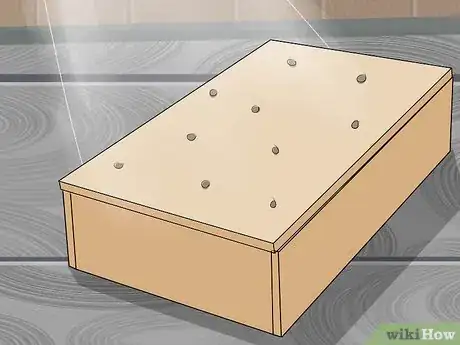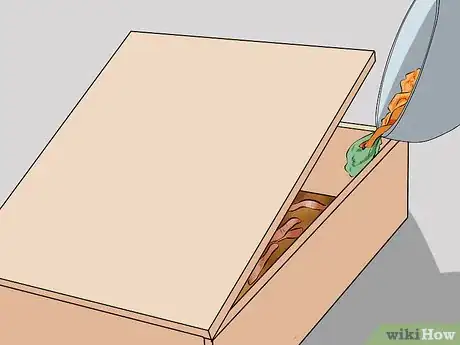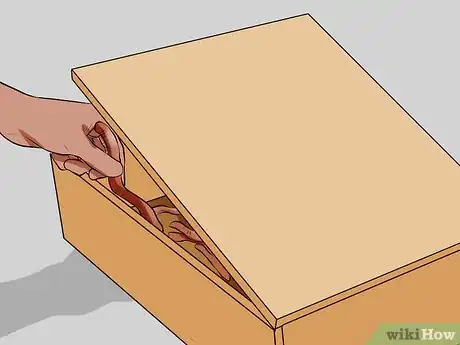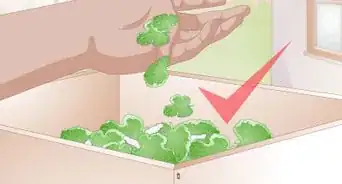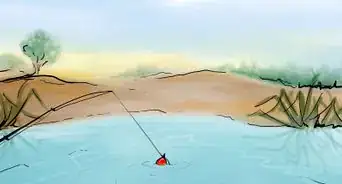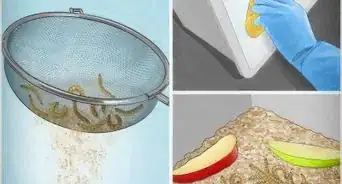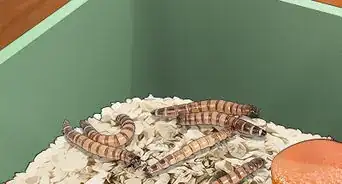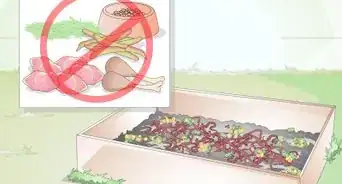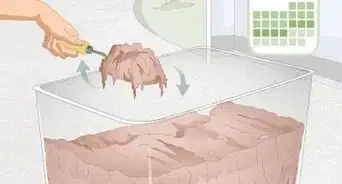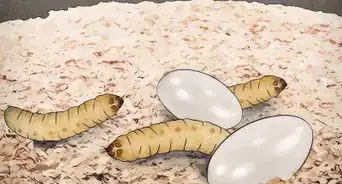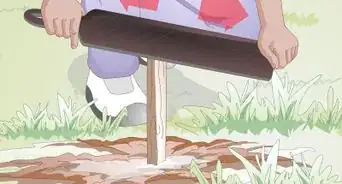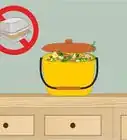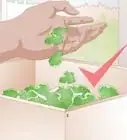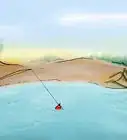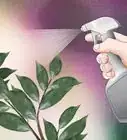wikiHow is a “wiki,” similar to Wikipedia, which means that many of our articles are co-written by multiple authors. To create this article, 17 people, some anonymous, worked to edit and improve it over time.
This article has been viewed 144,477 times.
Learn more...
You can make a worm bed to either raise worms as fishing bait or to raise worms to compost kitchen scraps. Worms thrive in a bed made out of shredded paper and are fed vegetable food scraps. This article will teach you to make a small worm bed for red wrigglers using plywood lined with fabric.
Steps
Build the Worm Bed Frame
-
1Purchase 6 pieces of 1/2" (1.25 cm) plywood cut to the following specifications:
- 2 24" x 36" (60 cm x 90 cm) pieces for the top and bottom of the worm bed
- 2 6" x 24" (15cm x 60 cm) pieces for the narrow sides of the worm bed
- 2 6" x 36" (15 cm x 90 cm) pieces for the long sides
-
2Stand 1 of the 24" x 36" (60 cm x 90 cm) boards up on a flat surface. The board should be resting on its longest side.Advertisement
-
3Press a 6" x 24" (15 cm x 60 cm) board against 1 side of the large board at a 90-degree angle. The 24" (60 cm) sides should be against each other.
-
4Hammer nails into the plywood to join the boards together. Space the nails approximately 4" (10 cm) apart. Make sure to keep the sides precisely aligned as you hammer.
-
5Position the other 6" x 24" (15 cm x 60 cm) board on the opposite side of the long board.
-
6Hammer nails into the plywood to join the 2 boards. When you're finished, you will have created the bottom of your worm bed and its 2 narrow sides.
-
7Attach the 6" x 36" (15 cm x 90 cm) boards to create the remaining sides of the box. When you are finished, you will have a lidless plywood box frame for your worm bed.[1]
Line the Frame
-
1Turn the box upside-down. The 24" x 36" (60 cm by 90 cm) board should be on top.
-
2Drill at least 10 holes into the 24" x 36" board.
-
3Cut a piece of black mesh fabric to cover the inside of the bottom board.
-
4Turn the box right-side up again. Cut a piece of black mesh fabric to cover the inside of the bottom board.
-
5Place the mesh fabric inside against the bottom board. Staple the fabric to the board by stapling along the perimeter of the fabric. The fabric will prevent the worms from leaving the box while still allowing them to breathe.
-
6Drill at least 10 holes into the remaining 24" x 36" (60 cm by 90 cm) board. Cover the top of the board with black mesh fabric, and staple the fabric into place. This board is the lid for your worm bed, and you can set it aside for the moment.
-
7Cut or tear newspaper into 1" (2.5 cm) strips for the worm bedding. Avoid using glossy magazine paper, which is toxic to worms.[2]
-
8Place the torn newsprint into the worm bed box. Spray the bedding with water so that it is damp but not dripping wet. Ideally, the worm bin bedding should be at about 80% moisture.
-
9Add some dirt and peat moss so that the worms can burrow and dig.
Add the Worms
-
1Place the worm bed in a dark area that is between 60 to 80 degrees Fahrenheit (15 C to 27 C). Your worms can tolerate temperatures as low as 40 degrees Fahrenheit (4 C) and as high as 90 degrees Fahrenheit (32 C).[3]
-
2Add about 2 pounds (0.9 kg) of red wiggler worms to the top of the worm bed.
-
3Place the fabric-lined lid on top of the box to block out the light and to keep the worms in their bed. The lid will also keep birds and other natural predators out of the worm bed.
-
4Turn a light on near your worm bed. Red wigglers dislike light, and the light will train them to stay in the dark bin.
-
5Feed the worms with scraps from your kitchen. Two pounds (0.9 kg) of worms will eat about 1 pound (0.45 kg) of scraps daily.
-
6Pick larger worms out of the worm bed every couple of months. Doing this will control the size of the worm population. You can use your worms as fishing bait, if you wish.
Community Q&A
-
QuestionCan I make the bed out of cardboard?
 Community AnswerThat would be a very short-term solution, as the moist soil would destroy the cardboard fairly quickly.
Community AnswerThat would be a very short-term solution, as the moist soil would destroy the cardboard fairly quickly. -
QuestionWhy do you need a water spray bottle?
 Community AnswerThis is needed to keep the worms moist. They take in oxygen through their skin, and can only do this if their skin is moist. If you don't spray them, they can't breathe.
Community AnswerThis is needed to keep the worms moist. They take in oxygen through their skin, and can only do this if their skin is moist. If you don't spray them, they can't breathe. -
QuestionWhy are my worms all on the surface?
 CaeiiaTop AnswererThe surface must be really moist; make sure they do not dry out when on the surface.
CaeiiaTop AnswererThe surface must be really moist; make sure they do not dry out when on the surface.
Warnings
- Make sure to use red wiggler worms and not earthworms. Earthworms prefer to dig deeper and will not thrive in a shallow bed.⧼thumbs_response⧽
- Avoid placing scraps of meat or animal products into your worm bed. These scraps will attract predatory animals and could threaten the safety of your worms.⧼thumbs_response⧽
Things You'll Need
- 2 pieces plywood or lumber, 1/2 inch (1.27 cm) thick, 24-by-36 inches (60-by-90 cm)
- 2 pieces plywood or lumber, 1/2 inch (1.27 cm) thick, 6-by-24 inches (15-by-60 cm)
- 2 pieces plywood or lumber, 1/2 inch (1.27 cm) thick, 6-by-36 inches (15-by-90 cm)
- Nails
- Hammer
- Drill and 3/4-inch drill bit
- Black mesh fabric
- Staple gun and staples
- Scissors
- Newspaper
- Spray bottle filled with water
- Red wiggler worms
- Vegetable and fruit scraps cut into small pieces
References
- ↑ https://www.youtube.com/watch?v=gCTzoFieGpY
- ↑ http://nationswell.com/71-items-you-can-put-in-compost-pile/
- ↑ https://aggie-horticulture.tamu.edu/archives/parsons/publications/worm/worm.html
- http://aggie-horticulture.tamu.edu/archives/parsons/publications/worm/worm.html]
- http://boyslife.org/hobbies-projects/projects/68/build-a-worm-bed/
- http://www.wormcompostinghq.com/caring-for-worms/
About This Article
To make a worm bed, start by cutting out 6 pieces of plywood so you have a bottom panel, a top panel, and 4 side panels. Then, nail the panels together to create the frame of your worm bed, leaving the top off for now. Next, drill several holes in the bottom and top panels of the bed, and staple a piece of black mesh fabric to each panel. Finally, fill the worm bed with strips of newspaper and some dirt and peat moss. To learn how to add worms to your worm bed, scroll down!
